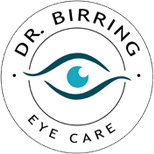Dealing with stinging, red, and irritated eyes is never a fun experience. However, many people experience these symptoms all the time; it’s extremely common. But how can you tell if it’s dry eyes, allergies, or something else?
If you’re just dealing with burning sensations, dryness, and overall discomfort, you’re likely dealing with dry eyes. However, if you experience any non-eye-related symptoms, like sneezing or coughing, you’re likely dealing with allergies.
How Allergies Affect the Eye
Think of allergies as though your immune system is going into overdrive. When you come into contact with allergens like pollen, pet dander, or dust mites, your immune system reacts by releasing histamines. They’re like a form of security for the body, designed to find and remove threats before they cause further harm to the system.
However, these histamines can be problematic. They can inflame the more sensitive areas of your body and lead to all kinds of unwanted symptoms. When it comes to allergic reactions in the eyes, histamines can cause:
- Redness
- Swelling
- Watering
- Sensitivity to light
The conjunctiva—the membrane covering your eyes and eyelids—quickly becomes inflamed, leading to that telltale redness and itchiness of an allergic reaction. Histamines can even stimulate nerve endings and heighten your sensitivity to the allergy symptoms. This overreaction from your immune system is the distinct factor that determines whether you’re having an allergic reaction.
What Causes Dry Eyes?
Your eyes are extremely sensitive, and they have a unique way of protecting and nourishing themselves—your tear film. Made up of 3 layers, this film helps wash away contaminants, protect the eyes, and keep them hydrated and nourished.
To function, the tear film needs a careful balance of oils, mucous, and water. When this balance is disrupted, the eye is no longer protected; you’ll quickly start to notice irritation and inflammation.
Whether the eye isn’t producing enough tears or is producing tears that can’t properly function, your eyes are vulnerable. You’ll quickly start to notice dry and burning sensations. This is a condition called dry eye.
How to Recognize Dry Eye
Dry eye is often recognizable by inflammation—it may feel as though there’s a small piece of sand lodged between the eye and eyelid. This condition can also cause:
- Burning or stinging feelings
- Redness of the eyes
- Blurred vision
- Sensitivity to light
- Discharge around the eyes
- Poor low-light vision
In some situations, the eye even floods itself with tears to try and protect itself. Though this seems counterproductive to the name, this symptom doesn’t help; instead, the eye is just creating poor-quality tears that quickly evaporate.
The Difference Between Allergies & Dry Eye
Allergies and dry eye can have similar symptoms, but they have some key differences. Both of these common conditions can cause:
- Discomfort
- Redness
- Irritation
- Excessive tearing
To determine whether or not you’re dealing with dry eyes or allergies, start by considering the timing. Allergic reactions only occur when you’re exposed to specific triggers like springtime pollen or dust. Try to keep an eye out for other signs of allergic responses, such as sneezing, coughing, itchiness, or any other reaction throughout your body; if you recognize these, you’re likely dealing with allergies.
On the other hand, dry eye symptoms can persist year-round and often last significantly longer than an allergic response. These symptoms often become much worse when you’re in a smoky, dry, or windy environment as the eyes need to work harder to protect themselves. If you’re only dealing with symptoms in your eyes with no other reaction, you’re probably experiencing a dry eye flare-up.

How to Find Relief
Finding relief from eye discomfort starts with a visit to the optometrist. They’ll examine your eyes to determine what’s causing your symptoms. Whether you’re dealing with allergies, dry eyes, or another underlying condition, they can recommend a specific approach to help resolve your symptoms.
Allergies
For allergy-related eye symptoms, your optometrist will likely recommend:
- Antihistamine eye drops to help reduce itching and redness
- Cold compresses to soothe inflamed eyes
- Avoiding triggers, like staying indoors during high pollen counts and keeping the windows closed
- Using an air purifier
- Oral medication to manage your overall allergy symptoms
Dry Eye
For dry eye, treatment becomes a little more specialized. Here at Birring Eyecare, we recommend:
- Artificial tears to maintain eye moisture and lubrication
- Omega-3 supplements to promote a healthy tear film
- Warm compresses to unblock oil glands in the eyes and produce higher-quality tears
We also often recommend in-office radiofrequency treatment. This uses special radiofrequency waves to help open blocked oil glands, allowing them to produce the oils needed to create a healthy tear film. This non-invasive approach can offer fast results, giving you a convenient way to find relief from your dry eyes!
Find Relief from Your Symptoms
If you’re struggling with eye discomfort, don’t wait to seek help. Instead, come see our team at Birring Eyecare. Our experienced team can find out what’s causing your symptoms and provide you with a personalized treatment plan going forward. Your comfort is our priority, so book an appointment with us today!



